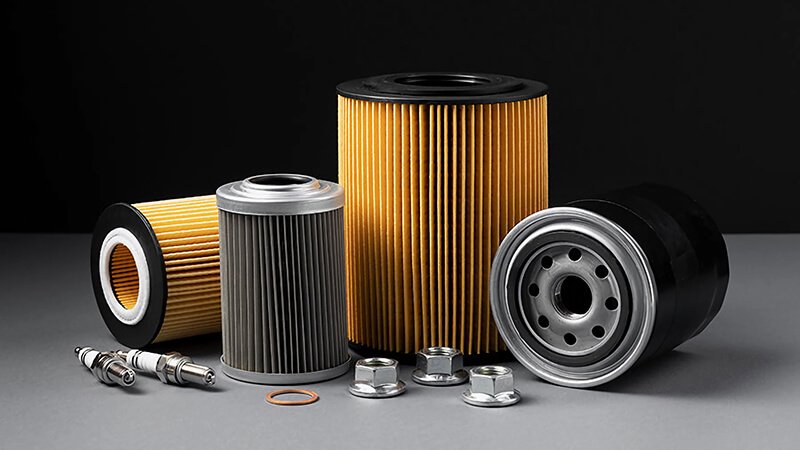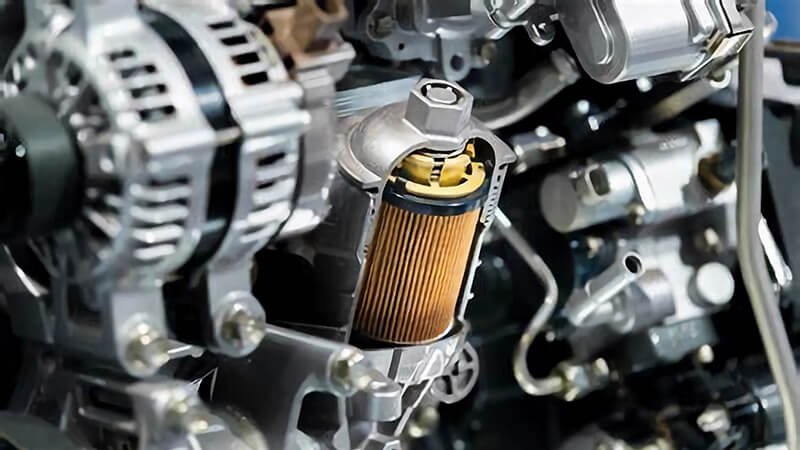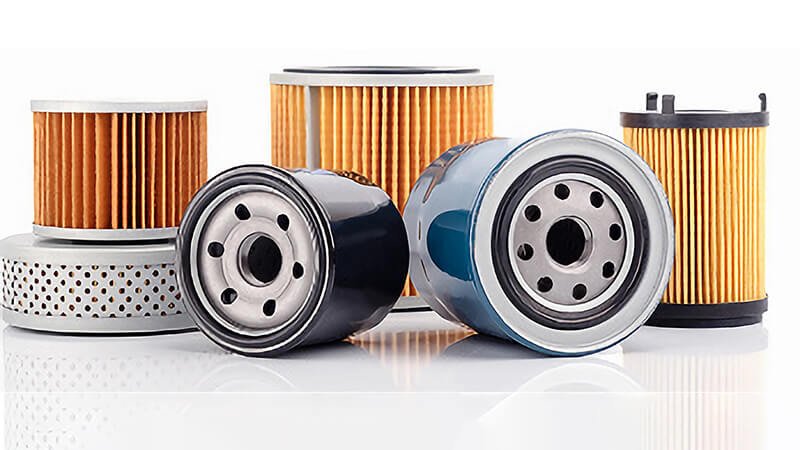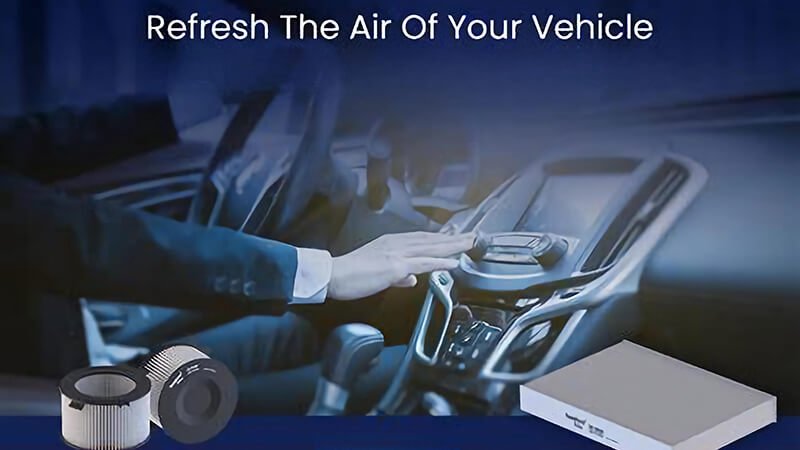Changing oil is a routine maintenance task for many car owners, but one question that often arises is why there is no oil in the oil filter when it's changed. This is not an unusual occurrence, but it may leave you wondering if something is wrong. In this article, we’ll explore why this happens and what it could mean for your vehicle.
If you’ve noticed that your oil filter is empty when changing the oil, it’s usually not a cause for concern. However, it could indicate a few potential issues with the engine or filter itself, including draining back to the oil pan or a defective filter.
While it might seem strange, an empty oil filter when changing the oil is generally normal. In this section, I’ll go into more detail about why this happens and what you should look out for.

Should you put oil in an oil filter when changing?
When you change your vehicle’s oil, one question often arises: Should you pre-fill the oil filter with oil? Some car owners believe it’s a necessary step to ensure the engine starts smoothly, but this isn't always the case. In this section, we’ll look deeper into whether pre-oiling your oil filter is necessary or if it’s just a myth.
In most cases, you do not need to pre-fill the oil filter when changing oil. While some mechanics suggest adding oil to the filter before installation to ensure proper lubrication, it’s generally not necessary as the oil pump fills the filter once the engine starts.
The oil filter serves a critical function in ensuring that the engine oil remains clean by trapping debris and contaminants. However, whether or not you need to pre-fill the filter depends on several factors, such as the filter design, the position of the filter in the engine, and the engine's oil circulation system.
-
Oil Circulation in Modern Engines1: In most modern engines, when you start the engine after an oil change, the oil pump immediately begins circulating oil, filling the oil filter as it works. This is typically sufficient to lubricate the engine without needing to manually pre-fill the filter. The key is to ensure the oil filter is installed correctly, as the oil will quickly move through the filter when the engine starts.
-
Pre-filling the Filter2: Some mechanics and vehicle owners pre-fill the oil filter to avoid a dry start, which can be damaging to the engine. However, this is mostly a concern in older cars or high-performance vehicles. Pre-filling the filter can also reduce the time it takes for the oil to reach critical engine components after the engine is started, reducing friction during the initial seconds of operation. Nonetheless, it’s not a requirement for all engines, and many modern oil filters come equipped with anti-drainback valves that prevent the oil from draining out when the engine is turned off.
-
Impact of Oil Filter Design3: The design of the oil filter plays a major role in whether pre-filling is needed. Some oil filters have anti-drainback valves built into them. These valves prevent oil from draining back into the oil pan when the engine is turned off, ensuring that the filter stays full and ready for the next start. Without this valve, the oil in the filter would drain back, leaving it empty when the engine is off.
-
Oil Filter Size and Vehicle Type: If you’re dealing with a larger vehicle or heavy-duty trucks, some experts suggest adding a small amount of oil to the filter, especially if the filter is large. In such cases, pre-filling can reduce the risk of dry starts and ensure proper lubrication when the engine is first started after the oil change.
| Consideration | Explanation | Recommendation |
|---|---|---|
| Engine Type | Modern engines circulate oil quickly | Pre-filling usually not needed |
| Anti-drainback Valve | Prevents oil from draining out of the filter | Avoid pre-filling if valve present |
| Filter Size | Larger filters may require additional oil | Add a small amount if necessary |
| Dry Start Risk | Pre-filling reduces the risk of a dry start | Optional for older cars or performance engines |

Does oil come out when changing oil filter?
When you change the oil in your car, it’s natural to expect oil to spill out of the filter. But how much oil should come out? In some cases, you might find the filter dry, while in others, it could release a lot of oil. In this section, we’ll dive into the factors that influence oil spillage when changing an oil filter.
Yes, oil will typically come out when changing the oil filter, but the amount depends on several factors, such as the filter’s location and design. In most cases, the oil that comes out is minimal, but some engines may spill more oil depending on the condition and type of filter.
When removing the oil filter, it’s almost inevitable that some oil will spill out. The amount depends on several key factors related to the engine design, the oil filter, and how recently the engine was run.
-
Filter Location: The location of the oil filter in the engine plays a major role in how much oil is retained inside. Filters located at a lower point or with a horizontal orientation may hold more oil, which will spill out when you remove the filter. On the other hand, filters mounted vertically may not retain much oil, and less will spill out.
-
Oil Drainage from the Filter: After the engine is turned off, the oil in the filter may gradually drain back into the oil pan, especially if there is no anti-drainback valve. This is typical in some older vehicle models or certain filter designs. However, even if the filter is empty when you remove it, some residual oil may still be present, depending on how long the engine has been off.
-
Engine Temperature: The temperature of the engine at the time of oil change affects the amount of oil that spills out. If the engine has been running, it may still have residual oil in the filter that hasn’t had a chance to drain back into the oil pan. This oil will spill out as soon as you remove the filter.
-
Oil Filter Design: Some filters have a built-in feature that retains oil even after the engine has stopped running. This feature, known as the anti-drainback valve, ensures that the filter is always filled and ready for the next engine start. However, if the filter lacks this feature, it’s likely to drain completely, and you may see a larger spill when you change the filter.
-
Condition of the Filter: A faulty or clogged oil filter can lead to a higher amount of oil spillage. If the filter is deteriorating or has a manufacturing defect, it may not seal properly, causing oil to leak out when the filter is removed.
| Factor | Effect on Oil Spillage | Recommendation |
|---|---|---|
| Filter Location | Lower filters retain more oil, causing more spill | Be prepared for spillage |
| Engine Temperature4 | Hot engines leave more residual oil in the filter | Let engine cool before changing |
| Oil Filter Design5 | Anti-drainback valves prevent oil spillage | Choose filters with anti-drainback valves |
| Condition of the Filter6 | Worn or defective filters spill more oil | Replace faulty filters |

Does the oil filter have oil in it?
The oil filter plays a critical role in keeping your engine’s oil clean and free of contaminants. But does the filter itself contain oil when you change it? In this section, we will dive deeper into the function of the oil filter and why oil is present in it.
Yes, the oil filter contains oil because it’s designed to trap contaminants as the oil flows through it. However, the amount of oil in the filter can vary depending on the design of the filter, the engine, and how long the filter has been in place.
The oil filter is designed to filter contaminants and debris from the engine oil, ensuring the oil is clean and helping to extend the life of the engine. Here’s a breakdown of why oil is present in the filter:
-
Oil Circulation and Filtering7: As engine oil flows through the filter, contaminants such as dirt, carbon deposits, and metal particles are trapped. This process ensures that the engine oil remains clean and free from particles that could damage the engine components. The filter itself holds a small amount of oil to perform this function effectively.
-
Why Oil Stays in the Filter: When the engine is turned off, the oil doesn’t always drain completely from the filter, especially if the engine has been recently running. This means that the oil filter can still contain some oil when removed. The amount of oil left in the filter depends on whether the engine has a drain-back valve or not, and how long the engine has been off.
-
Oil Filter Design and Functionality8: Most modern oil filters come with an anti-drainback valve, which prevents oil from draining out of the filter when the engine is off. This helps ensure that oil remains in the filter, ready for immediate lubrication when the engine is started again. Without this valve, the oil may drain back into the oil pan, and the filter may appear empty when removed.
-
When Oil Filters Are Empty: It’s common for oil filters to appear empty or dry after an oil change, especially if the engine hasn’t been running recently. This is not necessarily a sign of a problem with the filter. However, if the filter consistently remains empty despite engine use, this could indicate a malfunctioning filter or a more serious engine issue.
| Cause | Reason for Oil Presence in Filter | Impact on Engine |
|---|---|---|
| Oil Circulation | Oil flows through the filter to clean it | Ensures engine longevity |
| Anti-drainback Valve | Retains oil in the filter after the engine is turned off | Improves lubrication during startup |
| Engine Design | Engine design affects how much oil remains in the filter | Normal for most vehicles |

Why is there oil in my engine filter?
The presence of oil in the engine filter is essential for its function of cleaning the oil. In this section, we’ll take a deeper look at the reasons why oil is in your engine filter and why it’s critical to the overall health of your engine.
Oil in the engine filter is necessary for its filtration process. The filter traps contaminants and debris, ensuring that clean oil circulates back into the engine to prevent damage and maintain engine performance.
Oil is present in the engine filter because it serves as the medium that traps contaminants and debris. Here’s why the oil filter is designed to hold oil and how it contributes to engine health:
-
Filtering Contaminants9: As the oil circulates through the engine, it picks up contaminants like dirt, carbon particles, and metal debris. The oil filter’s job is to trap these contaminants, preventing them from circulating back into the engine. The filter essentially serves as a barrier to protect the engine from harmful particles.
-
Maintaining Oil Quality10: Without a functioning filter, the engine oil would quickly become contaminated, leading to increased friction, wear, and eventually engine failure. The filter ensures that the oil remains clean, allowing the engine to operate at its best for a longer period of time.
-
Oil Filter Design11: Most oil filters are designed with either pleated paper or synthetic media to trap contaminants. The design ensures that the oil passes through the filter’s media and returns clean oil to the engine. Over time, the filter becomes clogged with contaminants, which is why it needs to be replaced regularly.
-
Role in Lubrication: The oil filter plays a vital role in maintaining proper lubrication throughout the engine. By removing contaminants, the filter ensures that the engine’s internal components are properly lubricated, reducing wear and friction. This is essential for extending the life of the engine and ensuring its optimal performance.
| Function | Description | Impact on Engine |
|---|---|---|
| Contaminant Filtration | Removes dirt, metal particles, and other debris | Prevents engine wear |
| Oil Quality Maintenance | Keeps oil clean for longer periods | Extends engine life |
| Oil Filter Design | Uses pleated paper or synthetic media for filtration | Ensures proper lubrication |

Conclusion
In conclusion, while it might be unusual to find an empty oil filter12 during an oil change, it’s typically not a cause for concern. The design of the filter, the engine's oil circulation system, and the presence of features like anti-drainback valves all contribute to the oil filter's behavior. In most cases, the oil filter will be filled once the engine is started, and minimal spillage is expected when changing the oil. However, consistent issues like low oil levels, a faulty filter, or excessive oil drainage could point to underlying problems that need to be addressed. Regular maintenance, including timely oil and filter changes, is key to maintaining engine performance and prolonging its lifespan.
-
Understanding oil circulation helps you grasp how modern engines maintain lubrication effectively, ensuring longevity and performance. ↩
-
Exploring this topic can clarify the benefits and drawbacks of pre-filling, helping you make informed decisions for your vehicle's maintenance. ↩
-
Learning about oil filter design can enhance your knowledge of engine efficiency and maintenance, leading to better vehicle care. ↩
-
Learn how engine temperature impacts oil retention in filters to avoid messy spills during maintenance. ↩
-
Understanding oil filter design can help you choose the right filter to minimize spills during changes. ↩
-
Discover how a faulty filter can lead to increased oil spillage and the importance of regular maintenance. ↩
-
Understanding oil circulation and filtering is crucial for maintaining engine health and performance. Explore this link for detailed insights. ↩
-
Discover the innovative designs of oil filters that improve engine efficiency and longevity. This resource will deepen your understanding. ↩
-
Exploring this topic reveals how effective filtration can enhance engine efficiency and reduce wear, crucial for vehicle maintenance. ↩
-
This resource will provide insights into the significance of clean oil for engine longevity and performance, essential for any vehicle owner. ↩
-
Understanding oil filter design can help you choose the right filter for your engine, ensuring optimal performance and longevity. ↩
-
This link show you all details introduced by Runex about OEM Oil FIlter for your business. ↩












